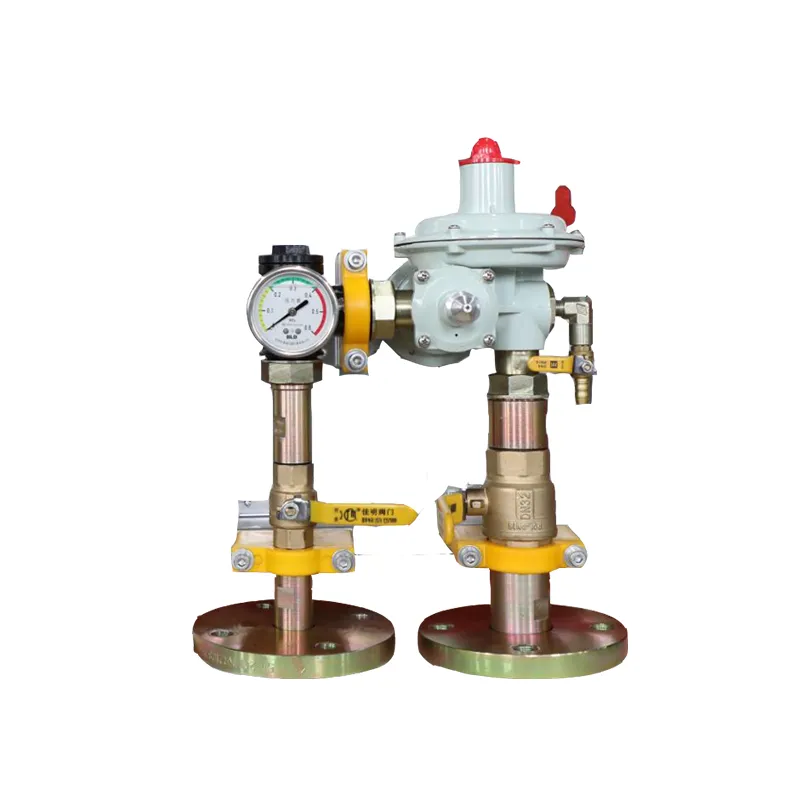
Jan . 02, 2025 09:05
Back to list
المبادل الحراري للغاز الطبيعي
Heat Exchangers for Natural Gas An Overview
Heat exchangers are critical components in various industrial processes, particularly in the natural gas industry. They facilitate the transfer of heat between two or more fluids, allowing for efficient energy use and temperature regulation. This article explores the significance, types, and applications of heat exchangers for natural gas.
Importance of Heat Exchangers
In the natural gas sector, heat exchangers play a vital role in multiple stages, including processing, transportation, and storage. They help in cooling, heating, and condensing natural gas, ensuring that the gas remains within safe operational temperatures. Efficient heat exchange is fundamental to improving energy efficiency, reducing operational costs, and minimizing environmental impacts.
Moreover, heat exchangers support the gas processing industry by aiding in the removal of impurities and moisture, which are detrimental to pipeline integrity and overall gas quality. The efficient management of temperature and pressure in processing facilities can significantly enhance product yield and safety.
Types of Heat Exchangers
Heat exchangers can be classified into various types based on different criteria, including their design, flow arrangement, and principle of operation.
1. Shell and Tube Heat Exchangers This design consists of a series of tubes, one set carrying the hot fluid and the other the cold fluid. Shell and tube exchangers are commonly used in natural gas processing due to their robust construction and ability to handle high pressures.
2. Plate Heat Exchangers These consist of thin plates arranged to create channels for the fluids. Plate heat exchangers offer a high surface area for heat transfer and are often used in situations where space is limited.
3. Air-cooled Heat Exchangers In regions where water is scarce, air-cooled heat exchangers use ambient air to cool fluids. They are widely utilized in natural gas processing for cooling operations while minimizing water usage.
المبادل الحراري للغاز الطبيعي

4. Spiral Heat Exchangers These are designed with spirally arranged channels that enhance turbulence and improve heat transfer efficiency. They are beneficial in applications that involve viscous fluids or those prone to fouling.
Applications in the Natural Gas Industry
Heat exchangers find applications in various parts of the natural gas supply chain
- Gas Processing Plants Here, heat exchangers are employed to recover heat from exothermic reactions and utilize it for preheating feed gases. This process increases the overall efficiency of the plant.
- Gas Compression During natural gas compression, significant heat is generated. Heat exchangers are used to remove this excess heat to maintain optimal compressor performance and prevent damage.
- Liquefaction In the liquefaction process, natural gas is cooled to cryogenic temperatures. Heat exchangers are crucial in this phase to transfer heat from the warmer gas to a refrigerant, facilitating the liquefaction process.
- Transportation and Storage Natural gas must be maintained at specific temperatures to ensure efficiency and prevent phase changes during transportation. Heat exchangers are instrumental in regulating these temperatures, especially in pipeline operations and storage facilities.
Conclusion
Heat exchangers are indispensable in the natural gas industry, affecting various operations from processing to transportation. Their ability to enhance energy efficiency and temperature control allows industries to operate safely and economically while minimizing environmental impacts. As the natural gas industry continues to evolve, advancements in heat exchanger technology will be pivotal in meeting the growing demand for a cleaner energy source.
Investing in efficient heat exchanger systems not only benefits the operational capabilities of natural gas facilities but also corresponds to broader global goals of sustainability and energy conservation. The ongoing research and development in this field are expected to lead to enhanced designs that cater to the specific needs of the natural gas industry in the evolving energy landscape.
Next:
Latest news
-
Safety Valve Spring-Loaded Design Overpressure ProtectionNewsJul.25,2025
-
Precision Voltage Regulator AC5 Accuracy Grade PerformanceNewsJul.25,2025
-
Natural Gas Pressure Regulating Skid Industrial Pipeline ApplicationsNewsJul.25,2025
-
Natural Gas Filter Stainless Steel Mesh Element DesignNewsJul.25,2025
-
Gas Pressure Regulator Valve Direct-Acting Spring-Loaded DesignNewsJul.25,2025
-
Decompression Equipment Multi-Stage Heat Exchange System DesignNewsJul.25,2025

